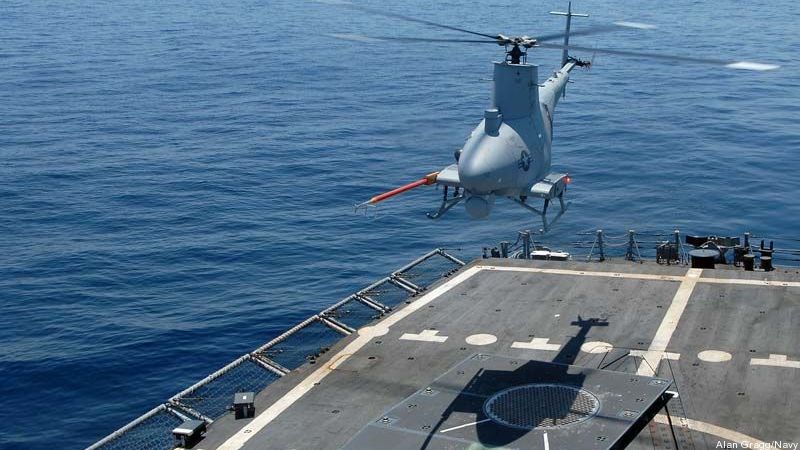
Washington: The program manager for the Navy’s Fire Scout rotary wing unmanned air system and the admiral responsible for UAVs rejected much of a highly critical review of the drone by the Pentagon’s top operational tester.
The director of the Defense Operational Test and Evaluation office said all of the drone’s flights during training took off late and more than half of those missions and flights during its operations from a Navy warship were incomplete, largely due to problems with the communications link used to control the air vehicle and to relay its full-motion video.
But in a briefing at the AUVSI unmanned systems conference, Capt. Patrick Smith, the program manager, and Rear Adm. Bill Shannon, program executive for tactical unmanned and strike systems, said those findings were based on problems that were corrected early in the Fire Scout’s voyage on the frigate Halyburton.
The Northrop Grumman-built drone performed much better in later anti-piracy missions off the Horn of Africa and in support of NATO strikes in Libya. Shannon said he agreed with a lot of the issues raised by the Pentagon tester, but “we have significant issues” with how he determined a failed mission.
The admiral rejected the standard that a “five-minute data link drop out” in a five-hour mission constituted an incomplete mission. Smith noted that two Fire Scouts flying from Halyburton flew 435 hours and three of the MQ-8Bs have accumulated more than 950 hours in support of U.S. and allied troops in northern Afghanistan, with high mission completion rates. One Fire Scout was lost over Libya and Sullivan said the Navy has determined it was downed by enemy fire.
Looking ahead, Smith said the Fire Scout program is responding to a request from the Special Operations Command for a version that can fly longer and, in response to a request from the Navy’s combat commander in the Persian Gulf, plans to make Fire Scout the Navy’s first armed UAS within 18 months. And the Navy is teaming with the Army on a larger and more capable drone helicopter in the Medium Range Maritime UAS program, Smith said.
Sullivan: Defense industry ‘still underestimating’ global need for munitions
National Security Advisor Jake Sullivan said that there are “no plans” for another Ukraine supplemental at this point.


























